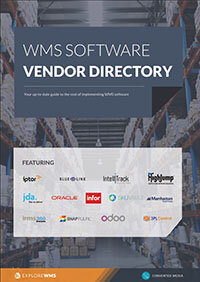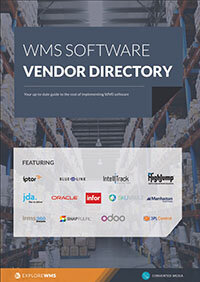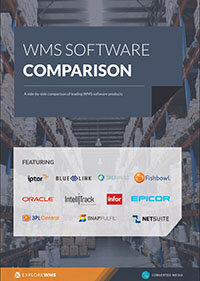Five worthwhile WMS choices when you need smart analytics
If a warehouse management tool or system doesn’t talk about analytics, it tends to get tossed out as a potential partner. That has led many to claim they provide analysis and dashboarding, but it’s often just window dressing.
We’ve pushed past the curtains to see what’s inside and come away with five of the many stout analytics offerings for anyone considering a new WMS.
1. The full picture: Infor Supply Chain Execution
For large companies, Infor’s Supply Chain Execution platform is a broad WMS and supply chain management tool that provides a wide range of dashboarding and analytics capabilities. It uses analytics to give WMS and supply chain professionals a way to look at warehouse activities across all sites in a unified, straightforward way. In your analytics, you’ll also get a variety of key performance indicators (KPIs) specific to your industry.
You can integrate a variety of 3PLs, labor management and transport management tools, and other databases in one UI. If you’re working across borders, it’s an intelligent choice because the platform supports 14 languages and has regional support for more than 40 countries.
2. Robust and scalable: Microlistics
Microlistics landed a “Notable Mention” in Gartner’s Magic Quadrant for Warehouse Management Systems in 2016 in particular for its analytics capabilities. The company provides strong tools for broad analysis as well as specific business intelligence thanks to a strong but flexible underlying platform.
The standard installation includes core needs like order trend analysis, stock, staff performance, and others, though the company offers custom configurations.
See how WMS vendors stack up against each other using this free WMS comparison tool
It’s a reliable service for companies operating and growing throughout the Middle East and Asia, and it has a nice focus on cold storage — though not restricted to these industries — and its analytics capabilities smartly follow suit.
3. Broader goals and analysis: JDA
JDA tends to land on a lot of lists for advanced features, and the analytics platform it offers makes this no exception. One reason we included it this time, however, is its ability to look beyond the WMS.
JDA Business Analysis for Warehouse Management is an analytics tool that runs the gamut from WMS specialists to executives to provide broader trends data. The focus of the platform is to turn data into direct, actionable insight but it doesn’t limit those capabilities to just the warehouse.
It’s one of the largest investments on our list and will need buy-in from a variety of stakeholders, but larger companies will find its integration numbers, partners, custom dashboards, and exception analysis useful.
4. Real-time insight: Aptean’s irms 360
Many different WMS will provide real-time analysis and support, but real-time capabilities are what landed the irms WMS from Aptean on our list. The irms team emphasizes real-time capabilities, both reporting and analytics, across a variety of sectors including inbound, outbound, order and inventory management, labor management, and specialty areas like kitting and assembly.
The platform has dashboarding tools that customers say they like, but it also makes data easy to use in other ways. It supports exporting to Excel or custom PDFs and provides access to a custom, ad-hoc reporting suite.
The brand’s expertise includes government and healthcare sectors with a variety of governance controls and compliance tools, which is a must-have if you’re performing analytics on data in either of these sensitive sectors.
5. Distribution center focus: WMSight
WMSight provides an analytics platform for most supply chain operations, though its business has a distribution center focus. It plays well with other reporting and analytics tools, which helps it be more powerful in a niche.
The system can track KPIs across almost all operations and offers a set of proprietary analytics tools and dashboards, though it still gives easy access to your data and makes the process simple to configure.
One feature that many businesses will enjoy is that the tools and exporting options have the non-technical end user in mind, so most team members will be able to see and understand reports or export data as needed. The company has a big focus on what’s next, think more machine learning in the warehouse and less about the also-rans in the IoT space, and signals a good growth for DCs that might want to innovate as well.
Free white paper

WMS vendor directory
Save hours of WMS vendor research with this free guide

Featured white papers
Related articles
-

What to include in your WMS RFP template
A comprehensive guide to WMS RFP templates, and what you should include in your final document.
-

Mission-critical features of food lot traceability software
What features of food traceability software will help you during a food recall
-

Your open source WMS buyers' guide
Everything you should consider prior to selecting an open source WMS



